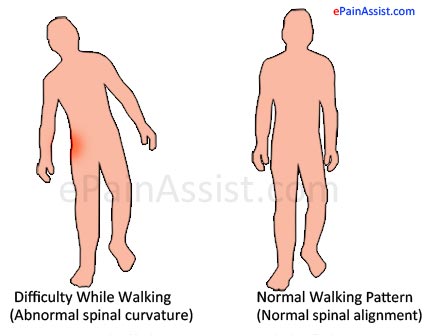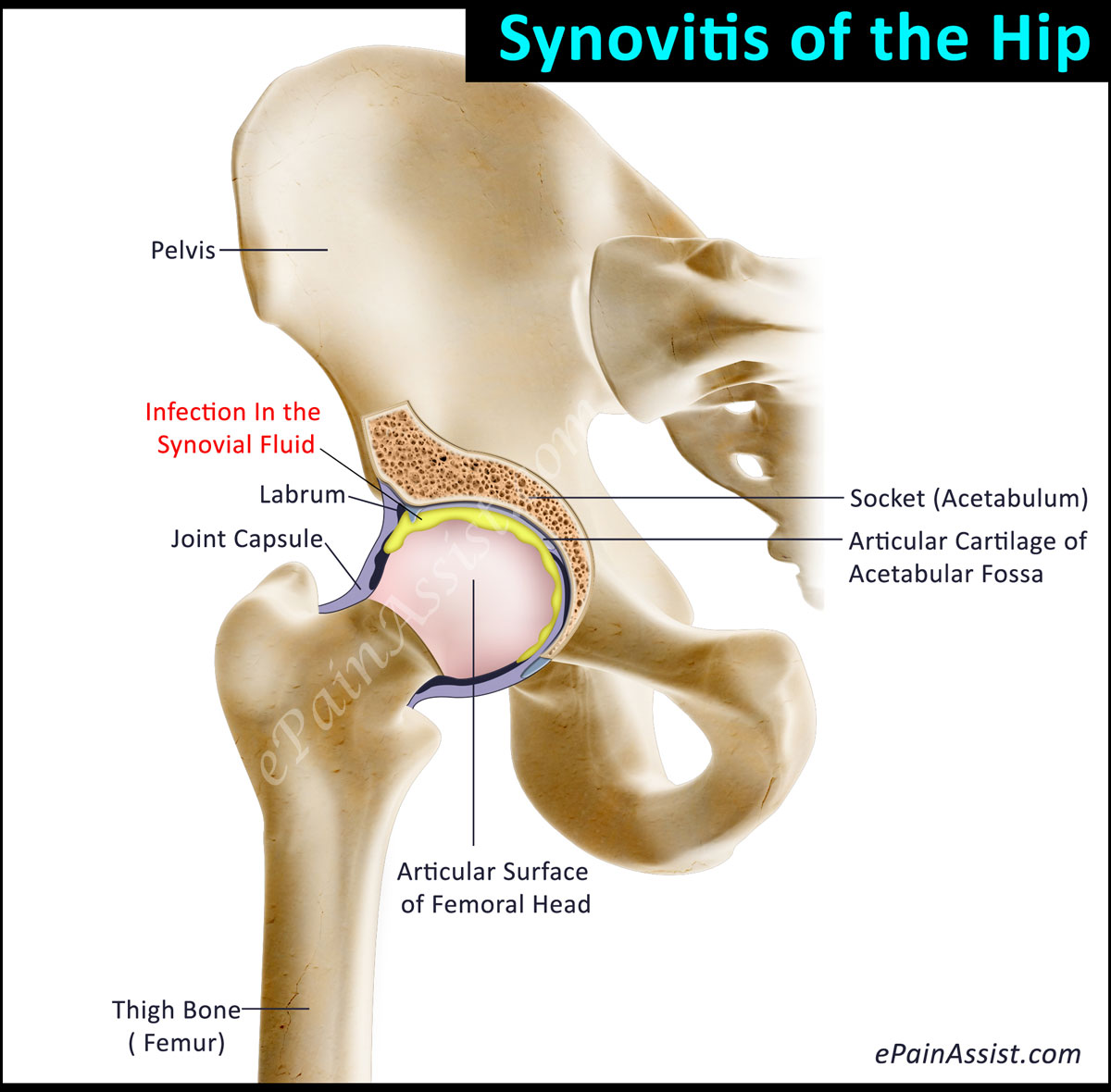A joint in the body is an area where the ends of two bones join each other with the help of connective tissue. The synovial joint is the most common type of joint of the body that consists of synovium and a small space between bone ends called as synovial cavity. The bony surface is covered with a thin layer of cartilage known as articular cartilage and the capsule that surrounds the joint consists of the synovium or synovial membrane, which is its inner lining.
The synovium is a membrane that secretes a lubricating fluid called as synovial fluid into the space present between the bones. The articular cartilage and the fluid perform together in order to decrease friction and absorb shock to prevent the surfaces of the bone from rubbing against one another and help the bones to glide easily while performing movements. Painful inflammation of synovial membrane results in the condition known as synovitis.[1]
Synovitis of the hip or hip joint synovitis is a condition, which occurs due to a complication of an injury like collagen diseases, fracture, rheumatoid arthritis, an irritation in the joint, gout, and lupus.[2]
Inflammation of the cartilage that lines the joint of the hip is often suffered by the patient with synovitis of the hip or hip joint synovitis, which also results in hip pain that aggravates while performing movements. Synovitis of the hip or hip joint synovitis may also occur due to viral infection, injury, and medication.
Causes and Risk Factors of Synovitis of the Hip or Hip Joint Synovitis
- Direct blow to the hip can cause synovitis of the hip or hip joint synovitis.
- Damage to the synovium of the hip joint caused by other injury of the hip.
- Bacterial infection in the hip resulting from an open hip fracture.
- Previous hip injury can cause synovitis of the the hip.
- Inflammatory joint disease like rheumatoid arthritis and gout.
- Mineral or vitamin deficiency that creates the complications, more commonly seen following an injury.
- Contact sports like soccer and football are more likely to cause synovitis of the hip joint or hip synovitis.

Signs and Symptoms of Synovitis of the Hip or Hip Joint Synovitis
- Person suffering from synovitis of hip is likely to experience pain while performing movements of the hip.
- Feeling difficulty while walking is also another symptom of synovitis of hip or hip joint synovitis.
- Fever may also be noticeable.
- Hip swelling.
- Pain may also radiate down to the joint of the knee in a person suffering from synovitis of hip.
- Hip tenderness.
- Aggravation of pain while performing movements of the hip.
- Limping.[3]

Treatment for Synovitis of the Hip or Hip Joint Synovitis
- Anti-inflammatory drugs that may involve NSAID’s such as ibuprofen and aspirin.
- Using ice massage for about 10 minutes before and after exercise is helpful treatment modality for synovitis of the hip or hip joint synovitis.[4]
- In some cases powerful corticosteroids may also be used in the form of cortisone injections for treating synovitis of the hip or hip joint synovitis.
- Using crutches to prevent bearing weight on the hip joint helps the pain to subside.
- Specialized medications such as anti-rheumatic drugs may also be used.[5]
- Normal activities must be resumed gradually.
Surgery For Treating Synovitis of the Hip or Hip Joint Synovitis
Synovectomy is performed only when the condition lasts for a prolonged period and other treatments fail to yield satisfactory results in treating synovitis of the hip joint. Synovectomy is performed in two types such as partial synovectomy, in which only a part of the synovium is removed and a total synovectomy in which the entire synovium is removed.[6]
Prevention of Synovitis of the Hip or Hip Joint Synovitis
- Perform vigorous muscle strengthening program before beginning regular sports.
- Overall muscle strengthening and toning lessens the chances of injury leading to hip synovitis.
- Appropriate warm ups before workouts and competition goes a long way in avoiding injuries leading to synovitis of hip joint.
- Wearing hip pads helps in protecting the hip area while performing contact sports.
Tests To Diagnose Synovitis of the Hip or Hip Joint Synovitis
A medical history and thorough subjective and physical evaluation is performed to diagnose synovitis of the hip. Diagnostic tests may include:
- X-ray.
- Joint fluid analysis.
- https://www.mydr.com.au/sports-fitness/joint-synovial
- https://www.cancer.gov/publications/dictionaries/cancer-terms/def/synovitis
- https://www.betterhealth.vic.gov.au/health/ConditionsAndTreatments/hip-disorders
- https://www.ncbi.nlm.nih.gov/books/NBK459181/
- https://www.ncbi.nlm.nih.gov/pmc/articles/PMC4095029/
- https://www.hss.edu/conditions_synovectomy.asp
Also Read:
- Hip Bursitis or Trochanteric Bursitis: Causes, Symptoms, Treatment, Exercises
- Synovitis of Knees, Hips, Ankles, Shoulders, Wrists, Jaw Joint
- Hip Joint Arthritis: Types, Causes, Signs, Symptoms, Treatment, Surgery, Diagnosis, Risk Factors
- What is Hip Joint Abscess: Causes, Symptoms, Treatment, Physical Therapy, Complications
- Hip-Opening Yoga Poses & Its Benefits, Precautions

